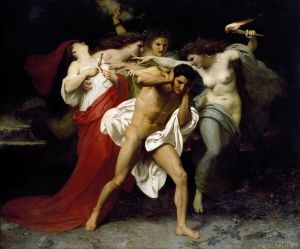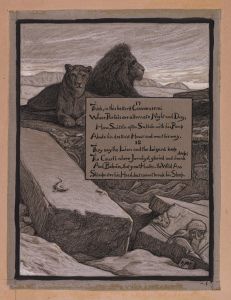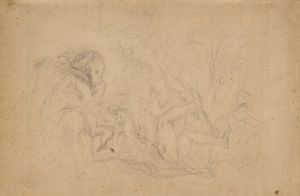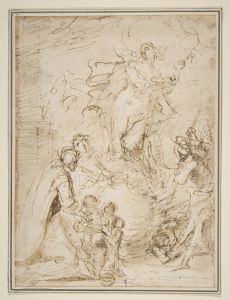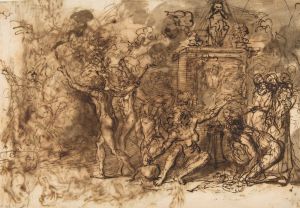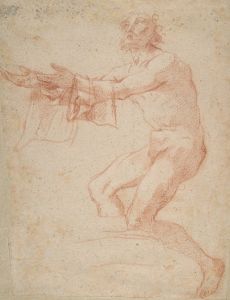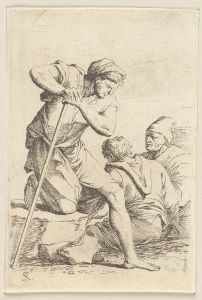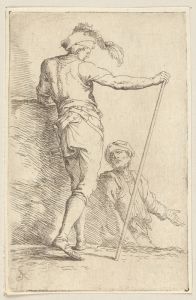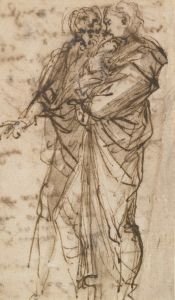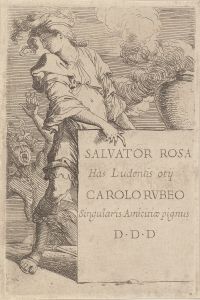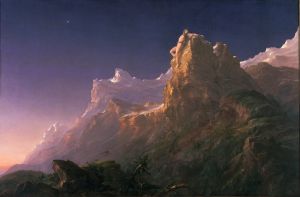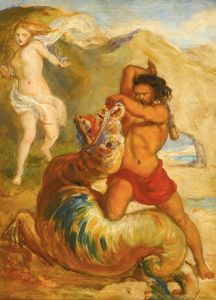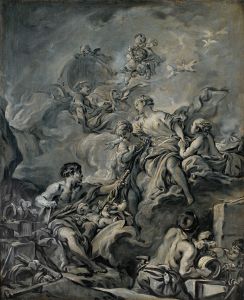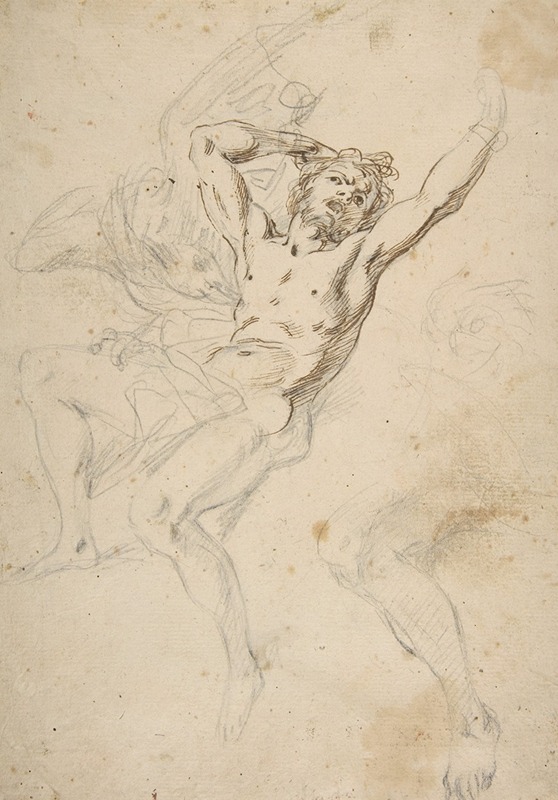
Study for a Prometheus Bound
A hand-painted replica of Salvator Rosa’s masterpiece Study for a Prometheus Bound, meticulously crafted by professional artists to capture the true essence of the original. Each piece is created with museum-quality canvas and rare mineral pigments, carefully painted by experienced artists with delicate brushstrokes and rich, layered colors to perfectly recreate the texture of the original artwork. Unlike machine-printed reproductions, this hand-painted version brings the painting to life, infused with the artist’s emotions and skill in every stroke. Whether for personal collection or home decoration, it instantly elevates the artistic atmosphere of any space.
Salvator Rosa's "Study for a Prometheus Bound" is a remarkable example of the artist's engagement with mythological themes, showcasing his distinctive style and dramatic flair. Salvator Rosa (1615–1673) was an Italian Baroque painter, poet, and printmaker, known for his unorthodox and often rebellious approach to both art and life. His works frequently depicted wild landscapes, historical scenes, and mythological subjects, infused with a sense of drama and emotion.
"Study for a Prometheus Bound" is a preparatory work that reflects Rosa's interest in the myth of Prometheus, a Titan from Greek mythology who defied the gods by stealing fire and giving it to humanity. As punishment, Zeus condemned Prometheus to be bound to a rock where an eagle would eat his liver daily, only for it to regenerate each night. This myth has been a popular subject in art and literature, symbolizing themes of defiance, suffering, and the quest for knowledge.
Rosa's study likely served as a preliminary exploration of composition, form, and emotion for a larger, more finished work. While the exact date of this study is not clearly documented, it is consistent with the Baroque period's emphasis on dynamic movement, intense emotion, and dramatic contrasts of light and shadow. Rosa's ability to convey the agony and resilience of Prometheus through expressive figures and bold brushwork is evident in this study.
The composition of "Study for a Prometheus Bound" is characterized by its dramatic use of chiaroscuro, a technique that employs stark contrasts between light and dark to create a sense of volume and depth. This technique enhances the emotional intensity of the scene, drawing the viewer's attention to the suffering of Prometheus. Rosa's skillful rendering of anatomy and his attention to the physical tension in Prometheus's body further amplify the drama of the mythological narrative.
Rosa's work often reflected his philosophical and intellectual interests, and "Study for a Prometheus Bound" can be seen as an exploration of the human condition, the struggle against tyranny, and the pursuit of enlightenment. These themes resonated with the intellectual currents of the 17th century, a time when the boundaries of science, philosophy, and art were being actively explored and challenged.
While "Study for a Prometheus Bound" is a preparatory work, it stands as a testament to Salvator Rosa's artistic vision and his ability to capture the essence of mythological stories with emotional depth and technical skill. His works continue to be studied and admired for their innovative approach and their reflection of the complex interplay between art, mythology, and philosophy during the Baroque period.





